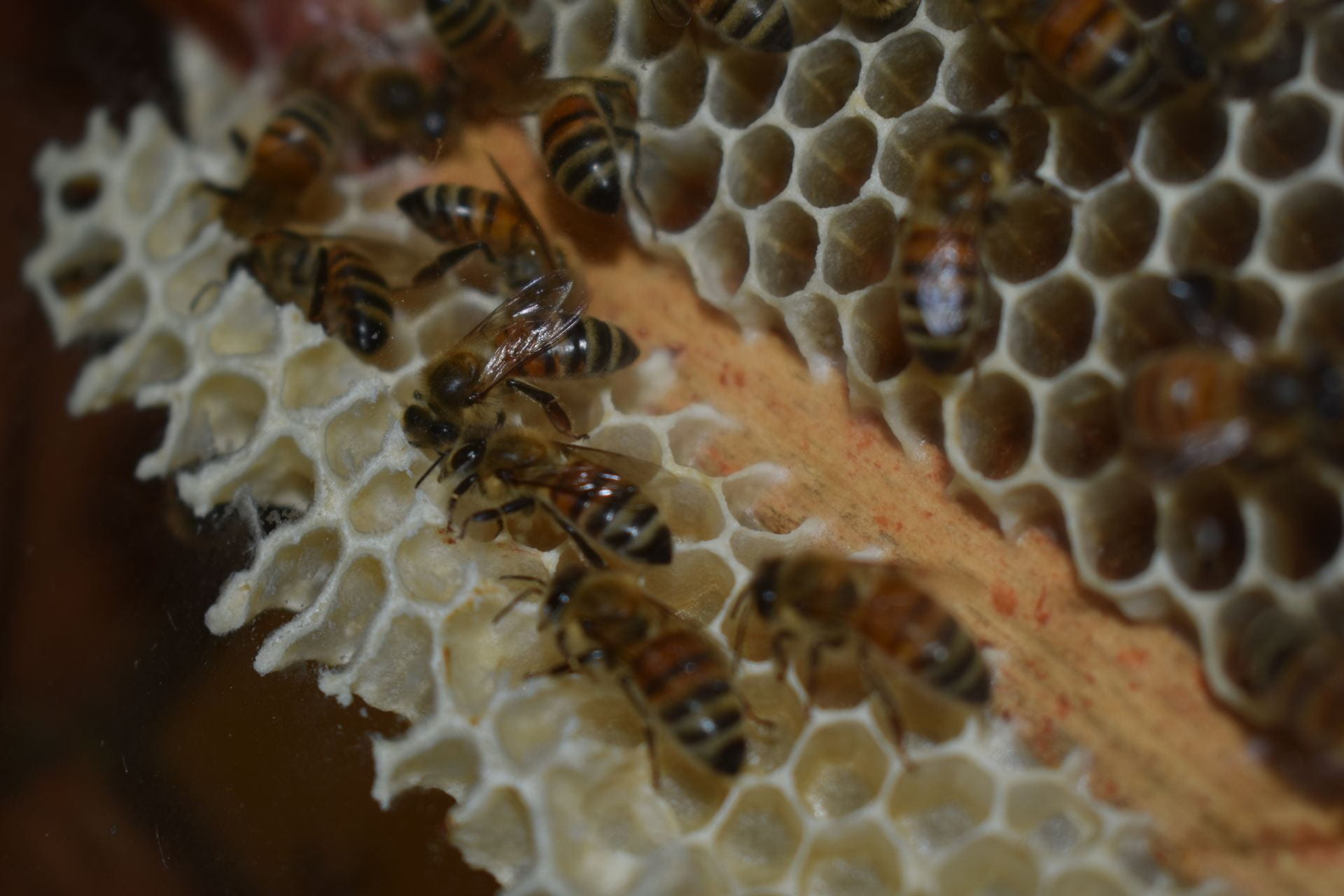This page will provide you with an insight to all things honeybees and everything you need to know!
Background to honeybees
Honeybees (Apis mellifera) are part of the scientific family Apidae. They are found within large colonies that consist of a queen, many sterile female workers and a small number of drones to (Honeybee centre, 2013).
A queen is formed by being fed royal jelly in her larvae stage by the worker bees. Royal jelly is rich in proteins and fatty acids which allows the larvae to form into the Queen. When the new queen emerges, she will venture out on a mating flight. When she returns back to her hive, with help from the worker bees, she will attempt to kill the failing, old queen (The British Beekeepers Association, n.d.).
They create honey from pollen and nectar that they collect from flowers which can be found in gardens, meadows, forests and even farmlands, and play a vital role within our ecosystem as pollinators (RSPB, n.d.).
This is what makes each hive’s honey so unique, each hive will collect a variety of nectar and pollen from different flowers albeit depending on the time of year. Honeybees can travel up to 2 miles to collect their nectar and pollen.
Worker bees only live for around 4-6 weeks, they will work for the queen and go out foraging to collect pollen and nectar, this is then stored and forms into honey, the collected pollen and nectar may be used to feed the brood (eggs). The Queen can amazingly live up to 5 years, however it is possible for her to leave her hive when a new queen emerges and swarm to form a new colony. Drones only serve one purpose and that is to reproduce with the queen and when autumn comes they will be kicked out of the hive.
Social behaviours
There are a variety of social behaviours which can be performed by the honeybee;
- The waggle dance;
- The waggle dance tells the watching bees two things about a flower patch’s location: the distance and the direction away from the hive (Barron and Plath, 2017).
Distance – the dancing bee waggles back and forth as she moves forward in a straight line, then circles around to repeat the dance. The length of the middle line, called the waggle run, shows roughly how far it is to the flower patch.
Direction – bees know which was is up and which way is down inside their hive and they use this to show direction. They do this by dancing with the waggle run at a specific angle away from straight up. Outside the hive, bees look at the position of the sun, and fly at the same angle away from the sun.
If the sun were in a different position, the angel would stay the same, but the direction to the correct flower patch would be different.
- The round dance;
- The round dance tells the watching bees only one thing about the flower’s location: that it is somewhere close to the hive.
- In this dance, the bee walks in a circle, turns around, then walks the same circle in the opposite direction. She repeats these many times and sometimes the bee includes a little waggle as she is turning around, the duration of this waggle is thought to indicate the quality of the flower patch she has found.
(Bee health, 2019; Griffin et al., 2012)
- The shaking signal; DVAV;
- One bee holding another bee with its front legs and shaking but stands still while the signal is performed.
- The behaviour is generally correlated with a need for more foragers and possibly serves as an invitation for inactive or non-foraging bees to look for waggle dances and prepare for foraging. “prepare for greater activity”.
- It is performed by foragers after their first new trips to a nectar source before they start waggle dances.
References;
The British Beekeepers Association (n.d.) Royal jelly. The British Beekeepers Association. Available from; https://www.bbka.org.uk/royal-jelly
RSPB (n.d.) Honeybees. RSPB. Available from; https://www.rspb.org.uk/birds-and-wildlife/wildlife-guides/other-garden-wildlife/insects-and-other-invertebrates/bees-wasps-ants/honey-bee/
Barron, A. B. and Plath, J. A. (2017) The evolution of honeybee dance communication: a mechanistic perspective. Journal of experimental biology. 4339-4346.
Honeybee centre (2013) About honeybees. Honeybee centre. Available from; http://www.honeybeecentre.com/learn-about-honeybees#.XotIVC2ZN0s.
Griffin, S. R., Smith, M. L. and Seeley, T. D. (2012) Do honeybees use the directional information in round dances to find nearby food sources? Animal behaviour 83 (6) 1319-1324.
Bee health (2019) Dance language of the honeybee. Available from; https://bee-health.extension.org/dance-language-of-the-honey-bee/.
